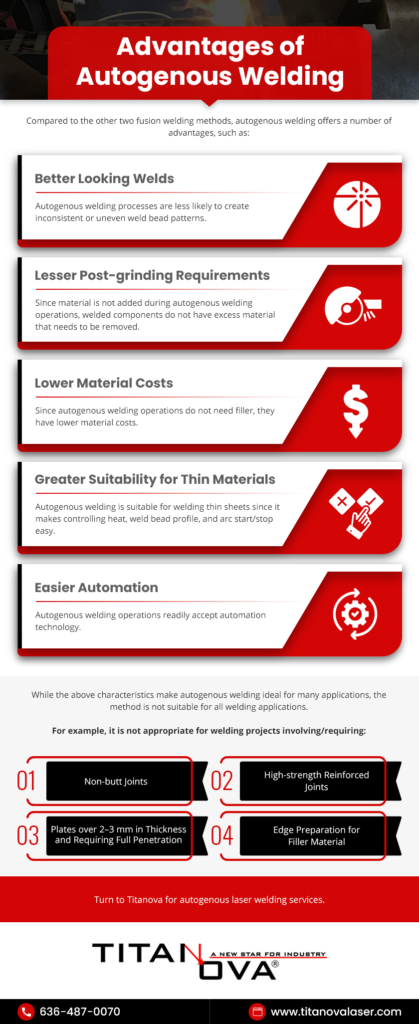An Introduction to Autogenous Welding
Comments Off on An Introduction to Autogenous Welding Welding is a manufacturing process used to join two or more individual pieces. It can be broadly categorized into two classifications: fusion welding and solid-state welding. Fusion welding encompasses all of the processes that utilize direct heat applied from an external source to fuse or melt contact surfaces of metals to weld them together, while solid-state welding encompasses all of the processes that require external pressure to weld materials together.
Welding is a manufacturing process used to join two or more individual pieces. It can be broadly categorized into two classifications: fusion welding and solid-state welding. Fusion welding encompasses all of the processes that utilize direct heat applied from an external source to fuse or melt contact surfaces of metals to weld them together, while solid-state welding encompasses all of the processes that require external pressure to weld materials together.
Fusion welding processes can be further classified by method. There are three main fusion welding methods: autogenous welding, homogeneous welding, and heterogeneous welding. They differ with regard to the application and nature of filler material (i.e., whether or not filter material is used and, if filler material is used, what it is made from). The following blog post focuses on autogenous welding. It highlights how it compares to the homogeneous welding and heterogeneous welding methods, what types of welding processes use it, and what advantages it offers.
Autogenous vs. Homogeneous vs. Heterogeneous Welding
Autogenous welding is a fusion welding method that does not require the application of filler material to form a weld. Since solid-state welding processes generally do not use filler materials, they may also be classified as autogenous.
In contrast to autogenous welding, both homogeneous welding and heterogeneous welding require the application of filler material to form a weld. Welding operations that use the homogeneous welding method need filler material that has the same composition as the base material, while welding operations that use the heterogeneous welding method need filler material that has a different composition than the base material.
Types of Autogenous Welding Processes
Autogenous welding is a method of performing fusion welding processes rather than a specific fusion welding process. Some of the fusion welding processes that use it include:
- Laser beam welding. This welding process uses a concentrated laser beam to melt the material and form the desired weld.
- Gas tungsten arc welding. This welding process uses a non-consumable electrode to form an high temperature arc to form the desired weld.
- Electron beam welding. This welding process uses a high-energy electron beam to form the desired weld.
- Plasma arc welding. This welding process uses an ionized plasma arc to form the desired weld.
Advantages of Autogenous Welding
Compared to the other two fusion welding methods, autogenous welding offers a number of advantages, such as:
- Better looking welds. Autogenous welding processes are less likely to create inconsistent or uneven weld bead patterns.
- Lesser post-grinding requirements. Since material is not added during autogenous welding operations, welded components do not have excess material that needs to be removed.
- Lower material costs. Since autogenous welding operations do not need filler, they have lower material costs.
- Greater suitability for thin materials. Autogenous welding is suitable for welding thin sheets since it makes controlling heat, weld bead profile, and arc start/stop easy.
- Easier automation. Autogenous welding operations readily accept automation technology.
While the above characteristics make autogenous welding ideal for many applications, the method is not suitable for all welding applications. For example, it is not appropriate for welding projects involving/requiring:
- Non-butt joints
- High-strength reinforced joints
- Plates over 2–3 mm in thickness and requiring full penetration
- Edge preparation for filler material
Partner With Titanova for Your Autogenous Welding Needs Today
Need an autogenous welding partner for your next project? Titanova has got you covered! We provide autogenous laser welding capabilities for a variety of metal parts and products. Contact us today to request a quote.

